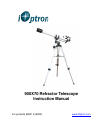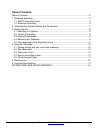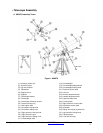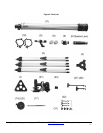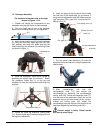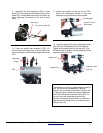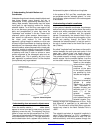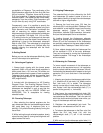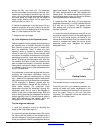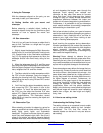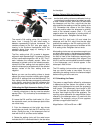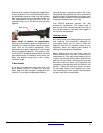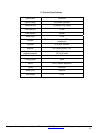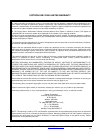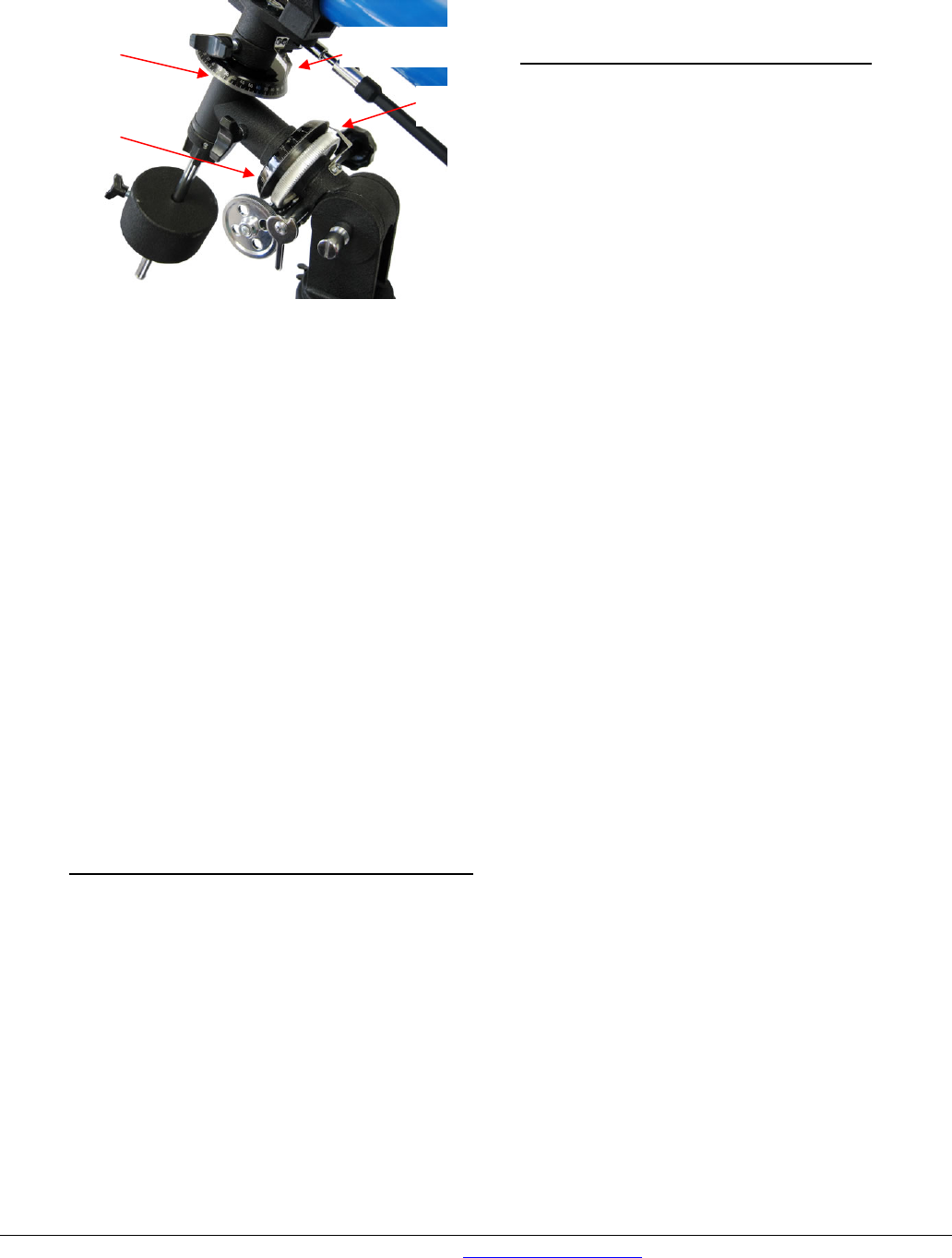
Having trouble setting up or making it work? Email us at 900X70@ioptron.com We’ll be glad to help!
11
The mount’s R.A. setting circle (16) is scaled in
hours, from 1 through 24, with small marks in
between representing 6-minute increments. The
numbers closest to the R.A. axis gear apply to
viewing in the Southern Hemisphere, while the
numbers above them apply to viewing in the
Northern Hemisphere.
The Dec. setting circle (13) is scaled in degrees,
with each mark representing 2° increments. Values
of Dec. coordinates range from +90° to -90°. The 0°
mark indicates the celestial equator. When the
telescope is pointed north of the celestial equator,
values of the Dec. setting circle are positive, while
when the telescope is pointed south of the celestial
equator, values of the Dec. setting circle are
negative.
Before you can use the setting circles to locate
objects, the mount must be correctly polar aligned,
and the R.A. setting circle must be calibrated. The
Dec. setting circle has been permanently calibrated
at the factory, and should read 90° whenever the
telescope optical tube is parallel with the R.A. axis.
Calibrating the Right Ascension Setting Circle
1. Identify a bright star in the sky near the celestial
equator (Dec. = 0°) and look up its coordinates in a
star atlas.
2. Loosen the R.A. and Dec. lock knobs (14, 12) on
the equatorial mount, so the telescope optical tube
can move freely.
3. Point the telescope at the bright star whose
coordinates you know. Lock the R.A. and Dec. lock
knobs. Center the star in the telescope’s field of
view with the R.A. and Dec control cables.
4. Rotate the setting circle until the metal arrow
indicates the R.A. coordinate listed in the star atlas
for the object
Finding Objects With the Setting Circles
Now that both setting circles are calibrated, look up
in a star atlas the coordinates of an object you wish
to view. Loosen the Dec. lock knob (12) and rotate
the telescope until the Dec. value from the star
atlas matches the reading on the Dec. setting circle
(13). Remember that values of the Dec. setting
circle are positive when the telescope is pointing
north of the celestial equator (Dec. = 0°), and
negative when the telescope is pointing south of
the celestial equator. Retighten the lock knob.
Loosen the R.A. lock knob (14) and rotate the
telescope until the R.A. value from the star atlas
matches the reading on the R.A. setting circle (16).
Remember to use the upper set of numbers on the
R.A. setting circle. Retighten the lock knob.
Most setting circles are not accurate enough to put
an object dead-center in the telescope’s eyepiece,
but they should place the object somewhere within
the field of view of the finderscope, assuming the
equatorial mount is accurately polar aligned. Use
the R.A. and Dec control cables to center the object
in the finderscope, and it should appear in the
telescope’s field of view.
The R.A. setting circle must be re-calibrated every
time you wish to locate a new object. Do so by
calibrating the setting circle for the centered object
before moving on to the next one.
4.5. Calculating the Power
The power or magnification offered by a telescope
is determined by two factors: the optical or focal
length of the telescope's lens and the eyepiece's
focal length. This telescope's focal length is 900
mm. To calculate the magnification factor, divide
the lens' focal length by that of the eyepiece. The
resulting value represents the magnification factor
offered by the telescope when it is used with this
eyepiece. For example, using a 20 mm eyepiece
provides a magnification factor of:
Magnification = 900 mm/20 mm = 45X
Dec. setting circle
R.A. setting circle
Dec. mark
R.A. mark



